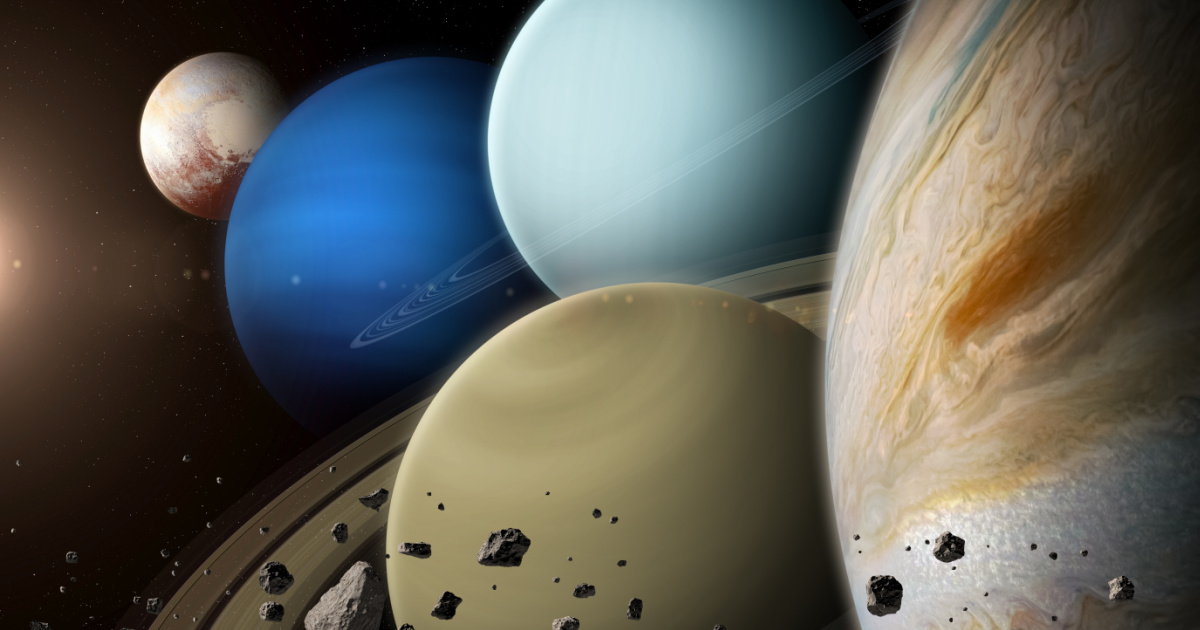
We’ve been fortunate enough, through major advancements that helped create telescopes like the James Webb, to be able to see quite a bit of the universe.
We have, of course, uncovered more questions than answers.
That said, we have learned a thing or two – like what is the largest planet we’ve ever spotted?
Jupiter is the largest planet in our Solar System, and for 400 years, it was also the largest planet we’d ever seen.
Now, with more than 5,000 planets under our belts, it’s record has been broken many times over.
That said, when it comes to the absolute largest, there are several contenders.
That’s because there remains some controversy about what, exactly, qualifies as a planet.
The International Astronomical Union (IAU) created a definition in 2005 (the one that excluded Pluto) that says a planet has to orbit a star but is not so large as to cause fusion at its core.
It also has to have achieved hydrostatic equilibrium (which would cause them to be spheres) and dynamically dominates its region.
The debate comes in relation to planets known as brown dwarfs, which have the gravitational pressure to fuse deuterium atoms at their core, but not hydrogen.
Some astronomers think brown dwarfs should be included as planets, as well as white dwarfs, but thus far, the IAU has rejected arguments for both.
This is because it defines the boundary as “limiting mass for thermonuclear fusion of deuterium (currently calculated to be 13 Jupiter masses for objects of solar metallicity).”
The mass required to initiate fusion depends somewhat on composition, and without knowing the ratio of hydrogen to heavier elements there are a whole lot of objects floating around out there than can’t be properly categorized.
The IAU excludes objects that are too large in relation to their star as well, as well as objects that float freely without a star or a brown dwarf at all.
Rogue planets are harder to find, but some are very large – large enough to be categorized as brown dwarfs, even.
The thing is, the margins of error in measuring both size and mass of exoplanets makes the title of “largest” hard to bestow – and that’s if we can be sure they’re not brown or white dwarfs to begin with.
One contender is GQ Lupib. Size estimates range from 1.8x to 4.6x the radius of Jupiter. It could be up to 6x, and more than 200x Jupiter’s volume, to boot.
It’s a very young planet, and the heat remaining from its gravitational potential energy makes it hard to classify and measure.
The distance it keeps from its star also means we can’t measure its mass based on gravitational effects.
HD 100546b is another contender, though estimates about its size, mass, and status as a planet are all in question.
PDS 70b is estimated to be 2.72x larger than Jupiter, and definitely falls within the category of planet. Its mass is between 2 and 8 times Jupiter’s.
DH Taurib is similar, but could be a brown dwarf.
HAT-P-67b is 2.085x the radius of Jupiter, but with a low density, it’s nowhere near Jupiter’s mass.
It’s all a bit confusing, don’t you think?
One day, we might have all of the answers – but not today.
If you thought that was interesting, you might like to read about a second giant hole has opened up on the sun’s surface. Here’s what it means.